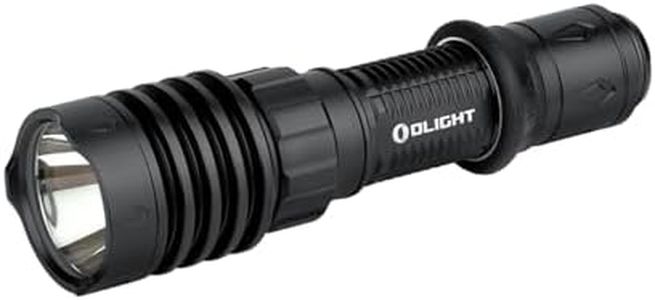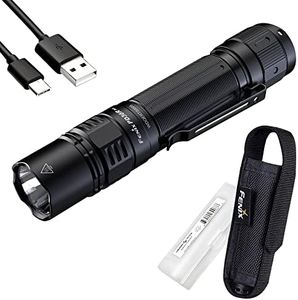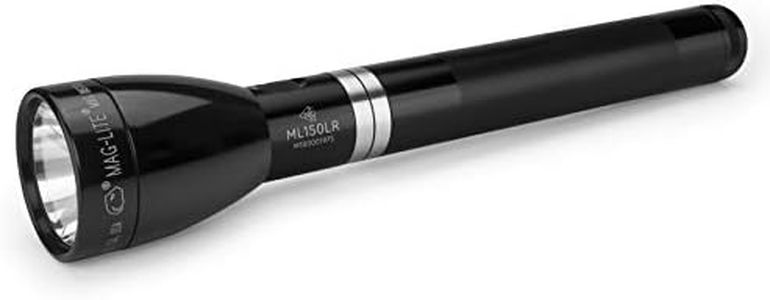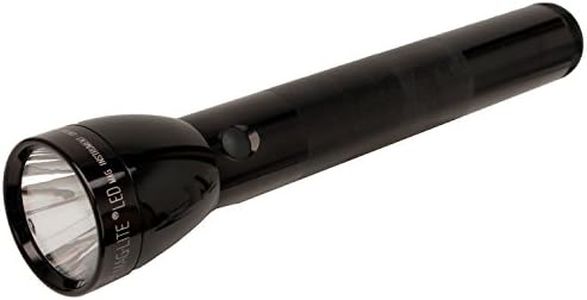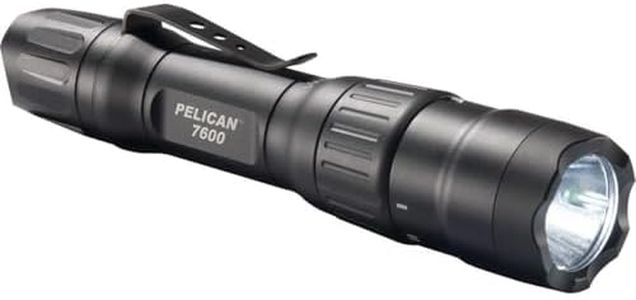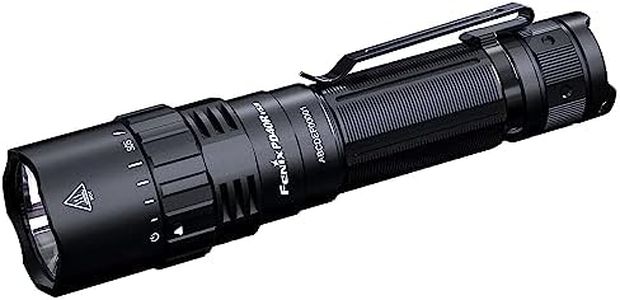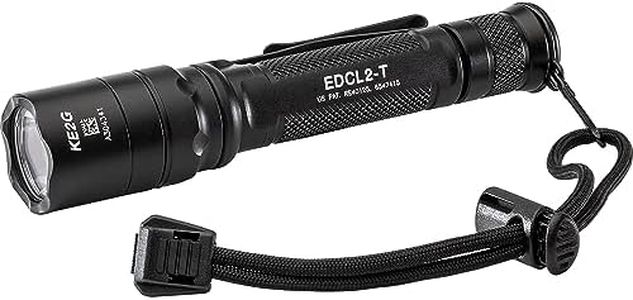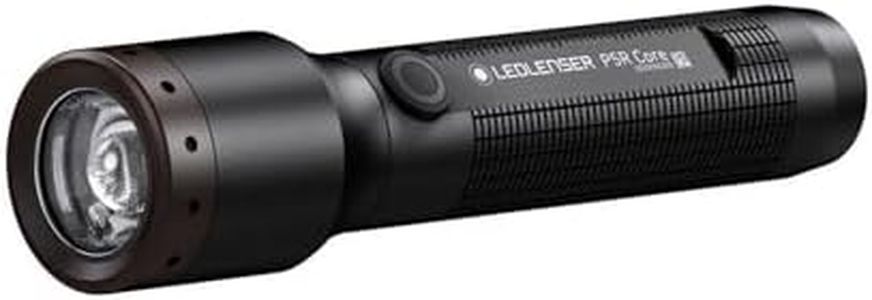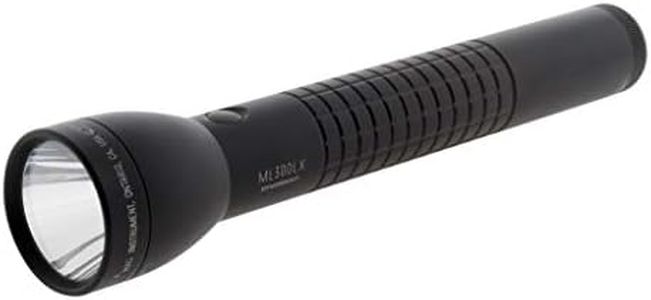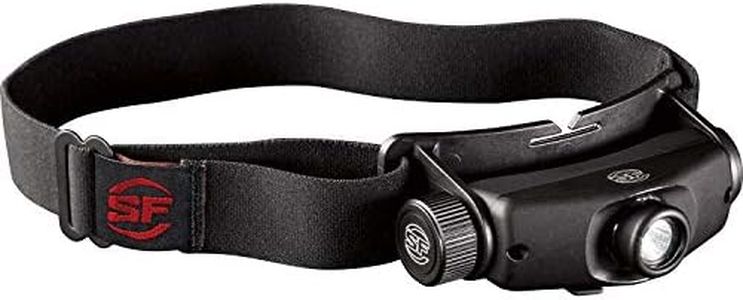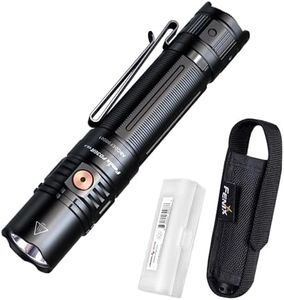We Use CookiesWe use cookies to enhance the security, performance,
functionality and for analytical and promotional activities. By continuing to browse this site you
are agreeing to our privacy policy
10 Best Law Enforcement Flashlights
From leading brands and best sellers available on the web.Buying Guide for the Best Law Enforcement Flashlights
Choosing the right law enforcement flashlight is important because it directly affects your ability to see and be seen, communicate signals, and stay safe in various situations. Since law enforcement work can happen anywhere and anytime, your flashlight needs to be reliable, durable, and easy to use. By understanding the key specifications and how they relate to real-life needs, you can make a choice that best supports your daily duties.Brightness (Lumens)Brightness, measured in lumens, tells you how much light the flashlight produces. Higher lumens mean a brighter beam, which is useful for searching large or dark areas, but too much brightness can cause unnecessary glare or drain the battery quickly. Flashlights under 200 lumens are good for indoor tasks or reading; 200-600 lumens work for general patrols or traffic stops; 600+ lumens are ideal for outdoor searches or tactical situations. Think about where and when you'll use the flashlight most and choose a brightness that balances visibility with comfort and efficiency.
Beam DistanceBeam distance is the farthest point the flashlight can effectively illuminate, usually measured in meters. Shorter beams (under 100 meters) are suitable for room-to-room searching or inspection within buildings, while medium beams (100-200 meters) handle most patrol and roadside work. Long-range beams (200 meters or more) are great for outdoor pursuits or situations where seeing far ahead is critical. Decide how much reach you need based on your usual environment, considering whether tasks are more close-up or at a distance.
Battery Type and RuntimeThe battery determines how long the flashlight will run and how easy it is to recharge or replace power. Some flashlights use common AA or AAA batteries, which are easy to find but often provide shorter runtimes. Others use rechargeable lithium-ion batteries, which last longer and save money over time, but require access to a charger. Consider how long your shifts are and whether you'll have regular opportunities to charge the light. For long, unpredictable shifts or locations without power, choose one with a long runtime or the ability to swap fresh batteries easily.
Durability and Water ResistanceDurability is about how well the flashlight stands up to drops, knocks, and rough conditions, while water resistance shows how well it can perform in the rain or if submerged. Most law enforcement flashlights are made from strong materials like aluminum and have water resistance ratings (like IPX4 for splash resistance or IPX8 for submersion). If you often work outdoors or in harsh environments, prioritize a model designed to withstand these conditions. Indoor or administrative use may require less ruggedness.
Size and WeightSize and weight affect how easy it is to carry and use the flashlight. Compact, lightweight models are easier to keep on your belt or in your pocket, making them quicker to deploy in emergencies. Larger, heavier models might offer more brightness or longer runtime, but they can be uncomfortable to carry for long periods. Think about your duty gear setup and the value you place on quick access versus high output.
Operation ModesMany flashlights offer multiple lighting modes like high, medium, low, strobe, or SOS. High mode is useful for maximum visibility or signaling, while low modes save battery and reduce glare indoors. Strobe functions can be used for disorienting suspects or calling for help. Consider what features will actually benefit you on the job and whether you prefer simple or multi-mode operation.
Switch Type and PlacementSwitches come in various styles such as tail-cap, side switch, or rotary. Tail switches are easy to operate with one hand and are popular in tactical situations, while side switches might be easier to use for regular tasks. The placement and feel should match how you plan to use the flashlight most often—whether drawing it quickly in high-stress situations or using it for general inspection.
Mounting and CompatibilitySome flashlights can be mounted on belts, vests, or even firearms. If you require hands-free operation or want to use the flashlight with other equipment, look for models that offer mounting options or accessories. Choose compatibility based on your standard-issue gear or any special tools you use on duty.

